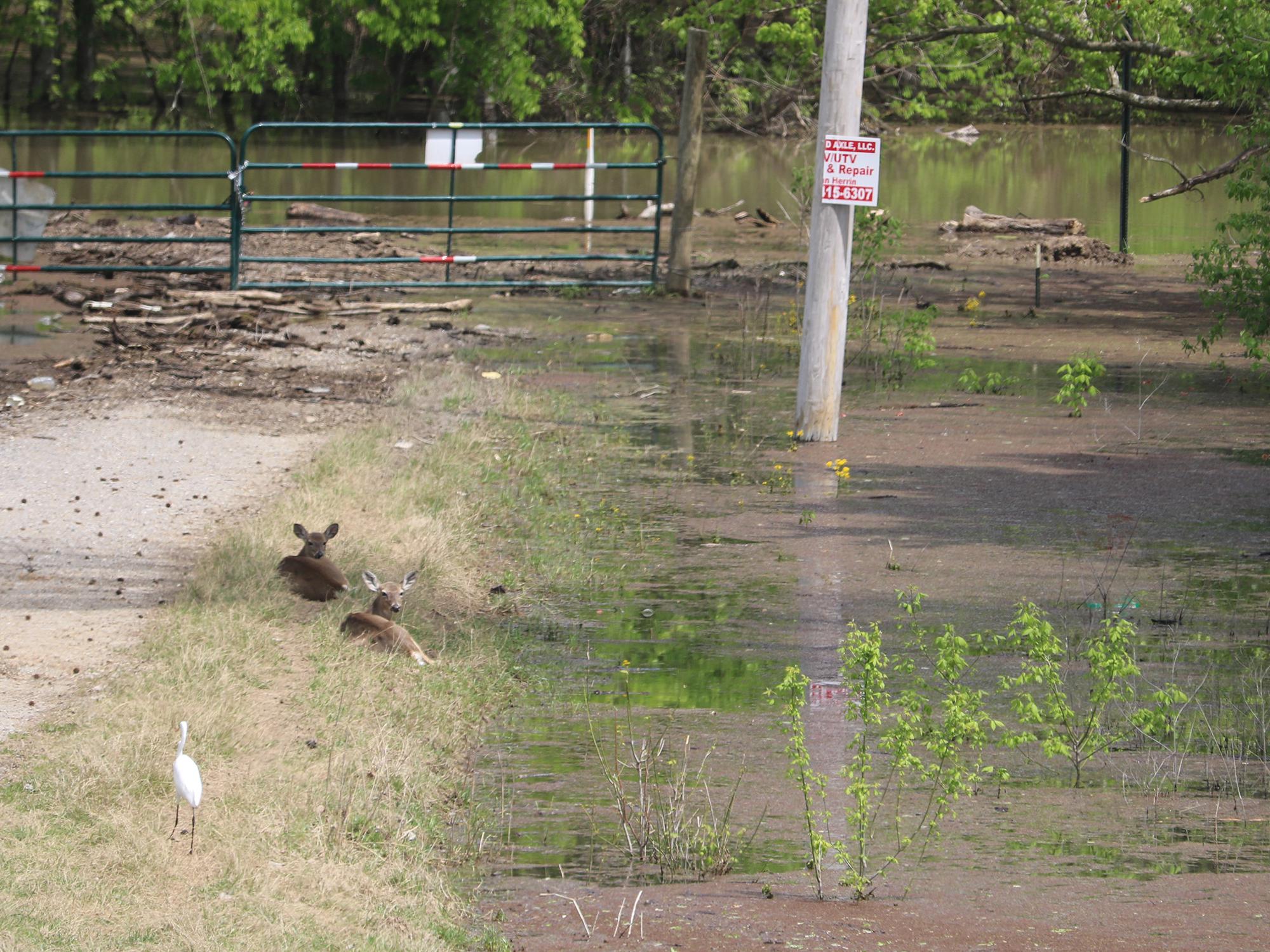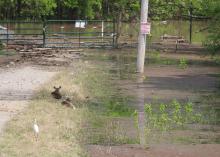Information Possibly Outdated
The information presented on this page was originally released on May 24, 2019. It may not be outdated, but please search our site for more current information. If you plan to quote or reference this information in a publication, please check with the Extension specialist or author before proceeding.
Flood waters send stressed wildlife to higher ground
STARKVILLE, Miss. -- Extensive flooding in the Mississippi Delta is pushing animals out of their comfort zones and creating stressful conditions as they just try to survive. Animals that can move ahead of the floodwaters will be concentrated on higher ground, potentially creating complications and conflict.
With over a half million acres of land under water, there are large numbers of displaced animals. As a result, the chances for vehicle collisions with wildlife are much greater, especially at night. Many roadways provide the only available high ground, forcing deer, wild hogs and other wild animals to congregate along these areas. Once floodwaters recede, the potential for such encounters will continue as animals return to their home ranges.
Be cautious when leaving the house in the morning. Wildlife could seek refuge from floodwaters on porches, on decks and in yards during the night. These animals are already highly stressed, and startling them or making them feel cornered can be dangerous. The same applies to returning home, stepping out after dark, and entering open sheds and barns.
When returning to flood-damaged homes, carefully go room to room checking for any lingering critters. Venomous snakes would be your first concern, but if an exterior door or window has been pushed in, there could be anything from a raccoon on top of the refrigerator to a bear on the bed.
We cannot be certain how big of an impact this flood will have on wildlife. Motor-vehicle-related mortalities have already increased. Drowning will cause some mortality, but the biggest concern is probably the stress from being displaced and the lack of food resources. Unless flooding is prolonged, these events should not have too big of an impact. The most noticeable impact likely will be the addition of new individuals to wildlife populations.
Here are some general relationships to keep in mind. The smaller and less mobile the animal is, the greater the likelihood of flooding having a negative effect. For example, think of the effects of flooding on mice and rabbits versus deer. A flood that decimates a population of small mammals will have little, if any, effect on deer.
What may be more important for animals like deer and turkey is the timing and duration of flooding. Although turkeys can fly, hens nest on the ground and flood waters could prevent a successful hatch. We have found similar results with deer. Flooding during the winter and spring essentially has no impact on deer populations or deer quality, but summer flooding can decrease fawn survival.
One ray of sunshine amongst all of this is the potential to put a good dent in the wild hog population. Taking advantage of this situation to conduct wild hog removal may be unsettling to some, but so is having to plant corn three or four times to get a standing crop. Hogs also are fierce competitors with native wildlife for resources as well as opportunistic predators.
The impact this flood has on wildlife in the Mississippi Delta remains to be seen. While there may be some short-term impacts on turkey and fawn recruitment, in the long term, wildlife populations will recover. All we can do for now is to wait and see.

Editor’s Note: Extension Outdoors is a column authored by several different experts in the Mississippi State University Extension Service.







